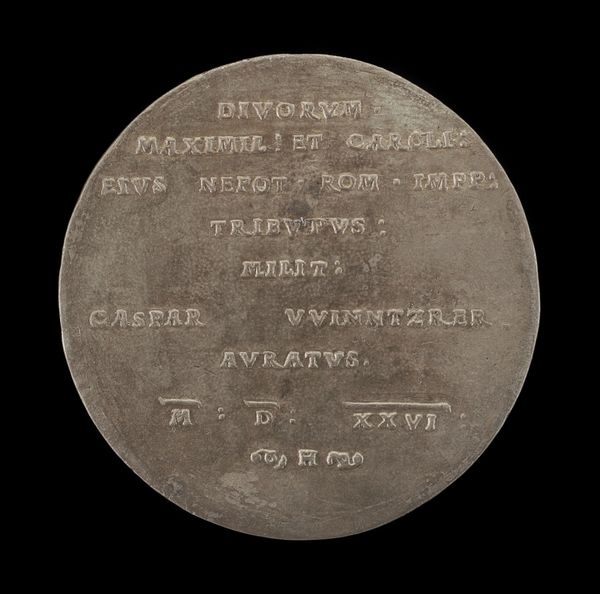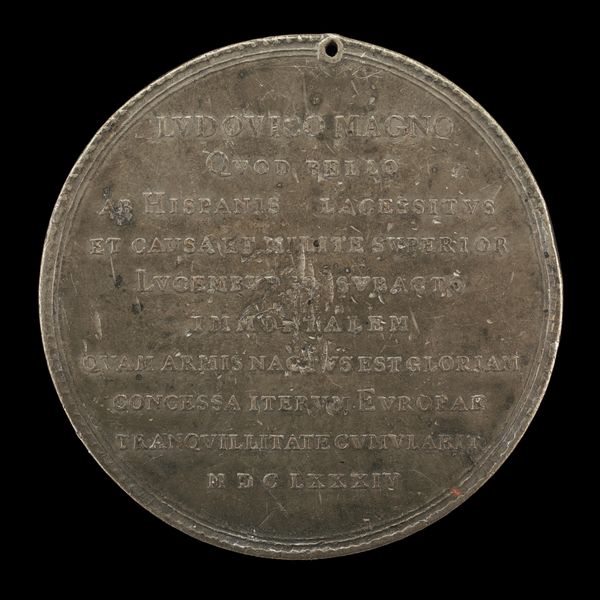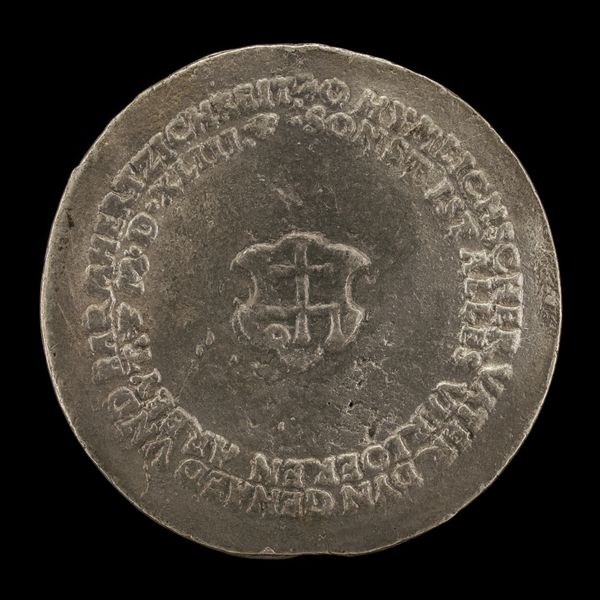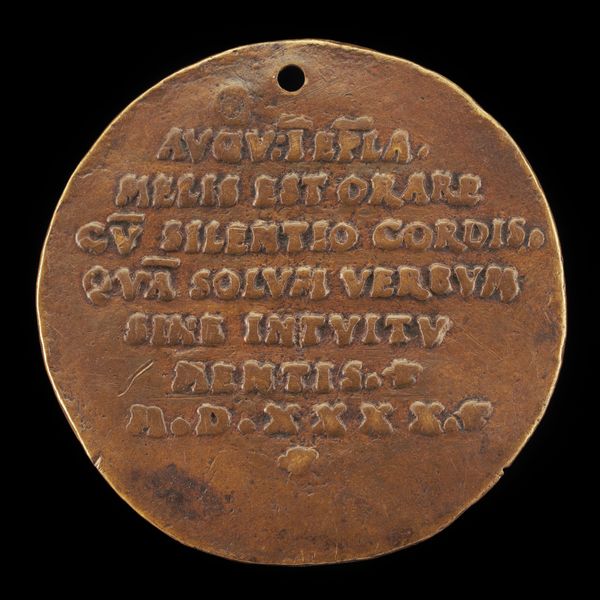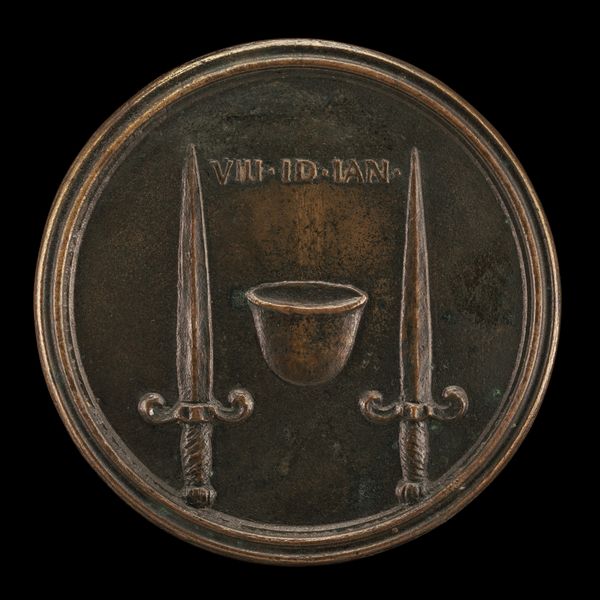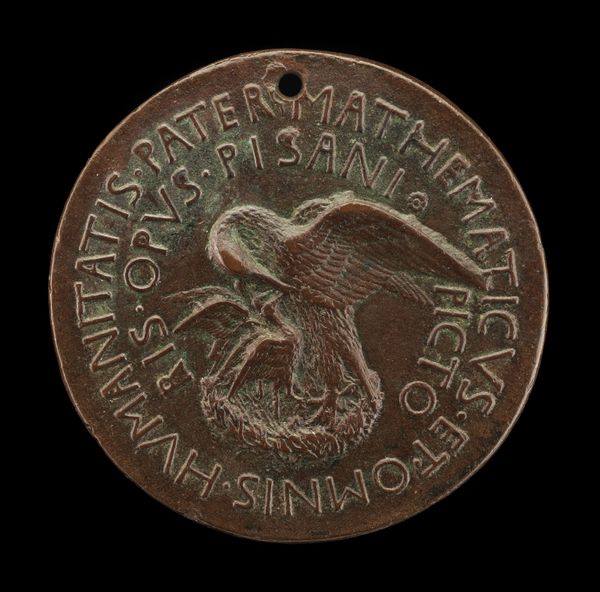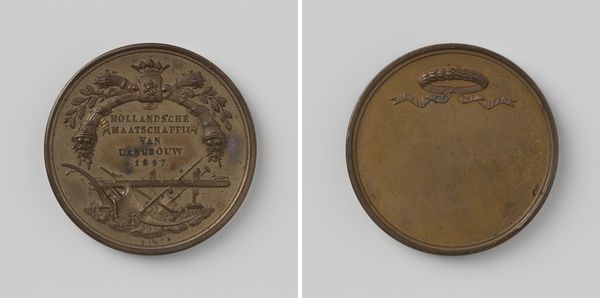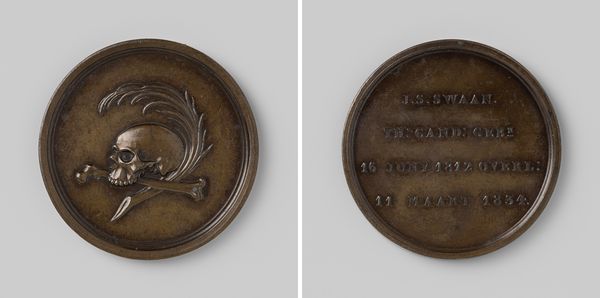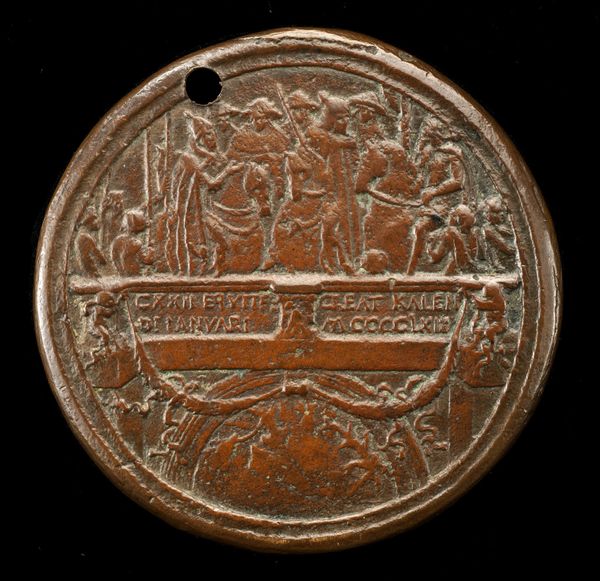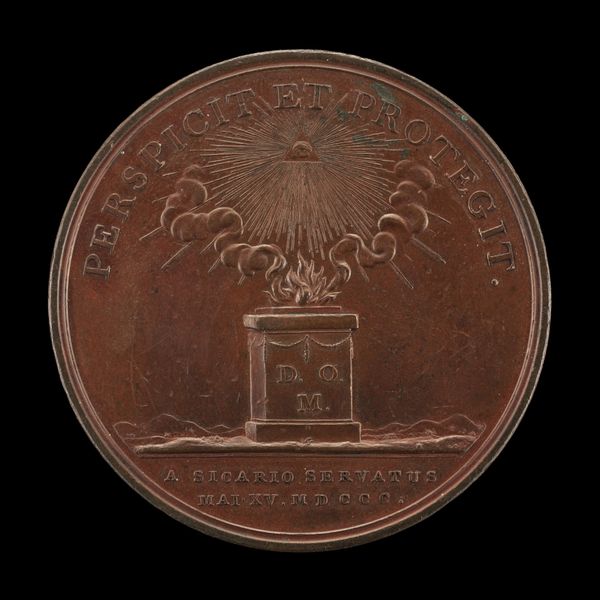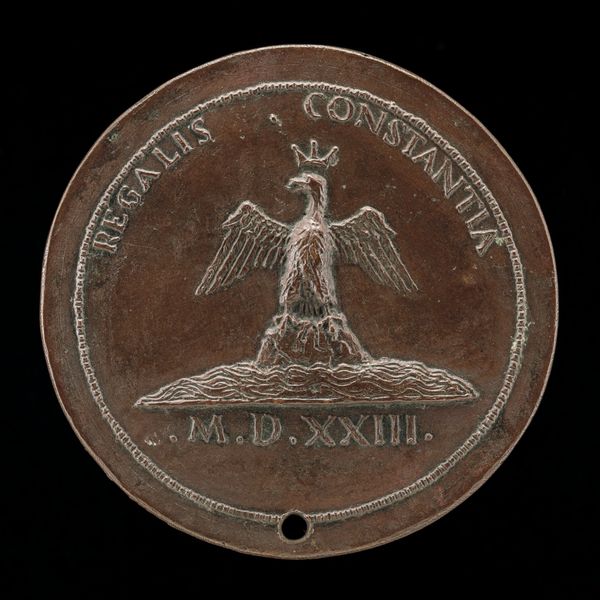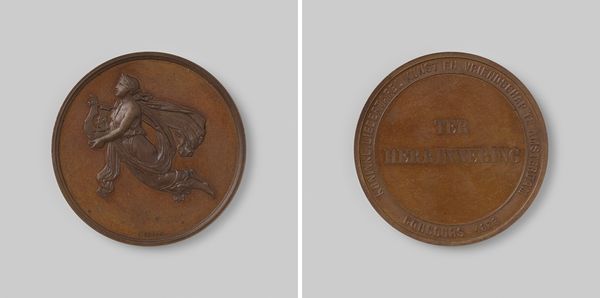![Ouroboros Encircling the Winged Helmet of Mercury and the Head of Athena [reverse] by Francesco Putinati](/_next/image?url=https%3A%2F%2Fd2w8kbdekdi1gv.cloudfront.net%2FeyJidWNrZXQiOiAiYXJ0ZXJhLWltYWdlcy1idWNrZXQiLCAia2V5IjogImFydHdvcmtzLzkwZTIyODE3LWNjZjktNDZiMC1iNjRmLTU5OTAxOTk3MjgzYS85MGUyMjgxNy1jY2Y5LTQ2YjAtYjY0Zi01OTkwMTk5NzI4M2FfZnVsbC5qcGciLCAiZWRpdHMiOiB7InJlc2l6ZSI6IHsid2lkdGgiOiAxOTIwLCAiaGVpZ2h0IjogMTkyMCwgImZpdCI6ICJpbnNpZGUifX19&w=3840&q=75)
Ouroboros Encircling the Winged Helmet of Mercury and the Head of Athena [reverse] after 1823
0:00
0:00
relief, bronze, sculpture
#
portrait
#
medal
#
sculpture
#
greek-and-roman-art
#
relief
#
bronze
#
geometric
#
ancient-mediterranean
#
sculpture
Dimensions: overall (diameter): 3.4 cm (1 5/16 in.)
Copyright: National Gallery of Art: CC0 1.0
Curator: This bronze relief is entitled "Ouroboros Encircling the Winged Helmet of Mercury and the Head of Athena," created after 1823 by Francesco Putinati. Editor: There’s a sense of weight to this piece. The patina of the bronze lends a somber air, like an ancient coin unearthed. It really pulls you into another time. Curator: It’s interesting to consider this object as a product of its time. Nineteenth-century interests in antiquity spurred an industry of reproduction and reinterpretation. We have this intricate ouroboros—the snake eating its tail—a symbol resonating across various cultures. But here, it frames distinctly Roman iconography. Editor: Absolutely. I'm thinking about power dynamics in this historical remixing. Mercury, the messenger, often a symbol of commerce, positioned above Athena, a deity of strategic warfare and wisdom... It feels loaded. The ouroboros itself, signifying cyclical renewal, contains these figures almost as if trapping or protecting them, raising interesting questions about the relationship between commerce and the concept of knowledge. Curator: And the materiality, of course. The act of casting, the skilled labor needed to produce such a detailed relief—these processes inherently imbue the object with social meaning, referencing traditional artistic production. What socio-political functions might an object such as this have? Who were the consumers and what were they aspiring to achieve? Editor: Thinking about this in the nineteenth century, you wonder if this was speaking to the construction of national identity through romanticizing the ancient past and its role for the present, drawing links to historical dominance. Who is legitimized by holding this artifact? Is the piece challenging or reifying hierarchies and structures? Curator: Precisely, how does Putinati's artwork intervene within the existing discourse, shaping, reinforcing, or even contesting its very structures? The creation itself involved miners who extracted the materials, foundry workers who cast it—a network of labour and skill concentrated in a single, symbolically rich object. Editor: It also draws a lot of connections between current cultural memory and power, even for viewers of today. Thinking about the labor involved, plus the art’s ties to historic narratives and knowledge, I am left pondering its enduring impact, for example, how and by whom such narratives might still be contested or perpetuated today. Curator: Reflecting on Putinati’s technique allows me to reconsider the social contexts in which it was created and consumed. Editor: And for me, it reinforces how historical imagery can be mobilized to subtly inform contemporary understandings of culture, identity and power.
Comments
No comments
Be the first to comment and join the conversation on the ultimate creative platform.

